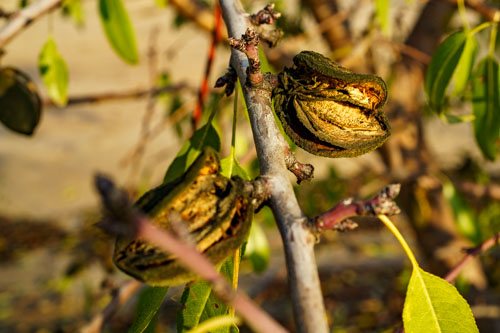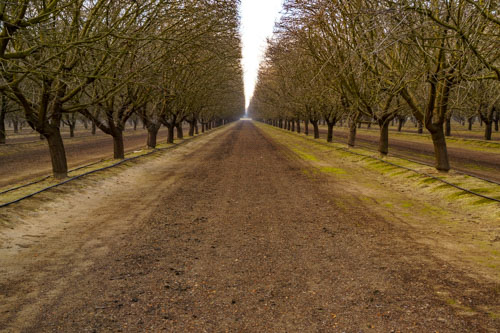If you are an almond grower, you may be familiar with the term delayed dormancy. But what does it mean and why is it important for your orchard management?
First, let’s recap the five different season stages in almond orchard:
- Dormant season
- Bloom to post-bloom
- Fruit development
- Harvest
- Post-harvest
Delayed dormancy in almond orchards happens at the end of the dormant season. That is the period from the resumption of growth, indicated by bud swell, until green tip. The timing of this season’s stage varies by region, variety, and weather. In California it usually occurs from late January to early February.
You will be familiar with delayed dormancy if you are involved in integrated pest management for almonds. During this period, preparations for blooming occur which include pest management, orchard sanitation and orchard floor management.
Pest Management
A delayed dormant spray is a solid pest management tool for almond growers. Done right, it will reduce pests such as peach twig borer, peach silver mites, brown almond mites, and delay sporulation of almond scab in the spring.
To apply a delayed dormant spray effectively, you need to monitor your trees for signs of bud swell and green tips. Bud swell is when the buds begin to enlarge and show some pink color. Green tip is when the green tissue of the flower emerges from the bud scales. The timing of your spray will depend on the pest you are targeting and the product you are using. For example, oil sprays are more effective against scale and mites when applied at bud swell, while insecticides for peach twig borer are more effective at green tip.
Orchard sanitation during delayed dormancy

Another important practice during delayed dormancy is winter sanitation. This involves removing almond mummies from trees and destroying them by the initiation of bloom to reduce navel orangeworm and brown rot. Winter sanitation can be done by shaking, poling, or hand picking the mummies. If more than two nuts per tree remain after sanitation, you may need to apply a spring insecticide to reduce overwintering navel orangeworm.
Orchard floor management

Orchard floor management is also crucial during delayed dormancy. You should assess the weeds present and identify those that were not controlled by a fall preemergence herbicide application. In January, you may consider applying postemergence herbicides in tree row strips alone or in combination with pre-emergence herbicides. You should also avoid driving or working on wet soils to prevent soil compaction and stuck equipment.
Delayed dormancy is a critical stage for almond production. By following these best practices, you can protect your trees from pests and diseases, improve your yield and quality, and prepare for a successful bloom.
Almond orchard task tracking
As an almond grower, you know how many different tasks need to be performed throughout the season. From pruning to harvesting, from fertilizing to irrigating, from pest control to quality control, there is always something to keep track of. That’s why task tracking is important. It helps you organize your work, monitor your progress, and improve your efficiency. AgNote includes a dedicated permanent crop management area where you can effortlessly track all your orchard details. There you can track inputs, sprays, irrigations, completed work and much more. You can register and try AgNote free for seven days.
Data tracking will help you learn from your experience. You can analyze the collected data, identify your strengths and improvement opportunities, and find ways to optimize your operations. Data tracking is not just a chore, it’s a tool for success.